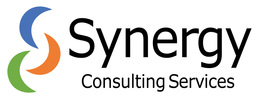 There's a bandwagon rolling through town with "Ditch the Performance Review" painted on its side. Have you jumped on already? Are you tempted to? I understand the appeal of this bandwagon. Most people don't enjoy giving feedback and receiving feedback can be awkward. Furthermore, the review process can take up an exorbitant amount of time and pull us away from daily work. But people need feedback. We need it at home. We need it at work. We need to know how we're doing, and how what we're doing fits in with what others need and want. Generally speaking, people are conscientious and that's where the desire comes from. (If someone is adamant that they don't need feedback of any sort from anyone, I think that brings its own concerns.) Can we agree that people need feedback? And beyond just meeting needs, well-executed reviews can build trust and engagement in your company. The issues comes around how reviews are done...let's look at that. In my experience, the biggest failings with performance reviews stem from three points.
0 Comments
Leave a Reply. |
Categories
All
Archives
January 2017
Want more? |
Services |
|

 RSS Feed
RSS Feed